
"Out of these heads darted curious rigid tentacles which seized ravenously on the excessively great quantities
of unmentionable food placed before the aperture. Once in a while the thing would leap up, and occasionally it
would retreat into its den in a very odd manner. Its locomotion was so inexplicable that I stared in fascination,
wishing it would emerge farther from the cavernous lair beneath me.
Then it did emerge ... it did emerge, and at the sight I turned and
fled into the darkness up the higher staircase that rose behind me; fled unknowingly up incredible steps and ladders
and inclined planes to which no human sight or logic guided me, and which I must ever relegate to the world of dreams
for want of any confirmation."
--Imprisoned with the Pharaohs, H.P. Lovecraft.
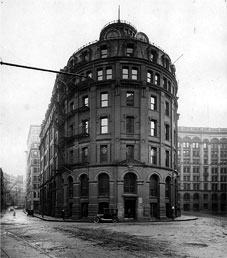 Boston Esoteric Society
Boston Esoteric Society
Located on the corner of Franklin and Hawley St, Boston, Massachusetts, at Franklin #22.
The Boston Esoteric Society is a group of privately funded scientists whose
expertise and studies often touch on the supernatural and paranormal. Extra Sensory Perception (ESP),
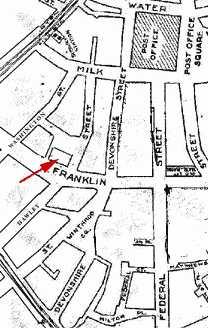 telekinesis, spirits and the afterlife, ancient history and archeology, the nature of space and time, the
structure of the universe and parallel universes, alien life and its impact on human history, evolution,
medicine, psychology and awareness, and cutting edge technology are all subjects of interest to its members.
Some of the most talented men and women scientists from the world around are also members of BES, and some
even keep their offices and conduct their experiments within their headquarters in Boston.
telekinesis, spirits and the afterlife, ancient history and archeology, the nature of space and time, the
structure of the universe and parallel universes, alien life and its impact on human history, evolution,
medicine, psychology and awareness, and cutting edge technology are all subjects of interest to its members.
Some of the most talented men and women scientists from the world around are also members of BES, and some
even keep their offices and conduct their experiments within their headquarters in Boston.
BES pays its bills by publishing scientific papers, conducting testing various
cutting-edge hypothesis on behalf of private investors, from patents resulting from the institutions work,
and by donations it receives from retired members and supporters of the scientific community. BES is not
publicly traded and often operates with great independence and discretion.
Despite occasional criticism from scientists who conduct more "legitimate"
and "scientifically sound" research and the reference to its employees as "quacks," the Boston Esoteric
Society continues to fill a useful role in the scientific community, to ensure that the truths of the
universe are indeed what the rest of the world presumes them to be.
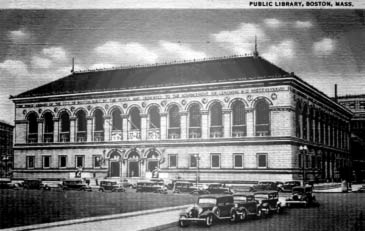 Boston Public Library
Boston Public Library
Established in 1848, the Boston Public Library was the first publicly supported municipal library in the
United States. Only students and faculty are allowed to borrow books, but the library is otherwise open and
available to the public. Hours are 8am to 9pm, Monday through Friday, and 10am to 6pm on Saturday. The
reference room is open Sundays from 1pm to 6pm, but the stacks are closed and books cannot be withdrawn on
that day. The library is large and hosts am impressive collection, containing over 400,000 volumes and a
substancial rare books, manuscripts, and incunabula collections, including the sixteen-volume set of De
Bryís Voyages (1598-1628), the Gutenburg Bible (1450-1455), the Catholicon (1460), Hypnerotomachia
Poliphila (1499), early editions of The Golden Legend (1527) and The Invisible Prince, The Wicked Manís
Portion (1675), etchings scribed by Cicero, Lactantius, Manilius, Martial, Petrarch, Seneca, and Vegetius,
and an extraordinary collection of over 500 atlases and 2,300 maps.
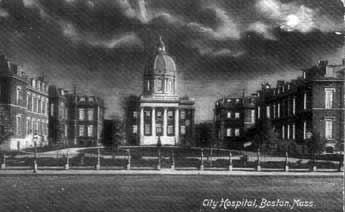 Boston City Hospital
Boston City Hospital
In the mid-to-late 19th century, after a devastating cholera epidemic had left the Massachusetts General
Hospital hopelessly overcrowded, and a special committee appointed by the Boston City Council had already
concluded that a municipal hospital was badly needed. Built between 1861 and 1864, the Boston City Hospital is
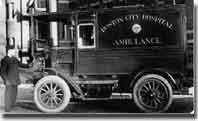 a private, not for profit, 300 bed academic medical center, located in Boston's South End at the axis of Worcester
Street. The Hospital is the primary teaching affiliate for the Boston University School of Medicine.
a private, not for profit, 300 bed academic medical center, located in Boston's South End at the axis of Worcester
Street. The Hospital is the primary teaching affiliate for the Boston University School of Medicine.
Nine main buildings compose the hospital campus, each connected to the central
administration facility by colonnaded walkways. To mitigate the hospitals distance from rural areas of the city,
ambulances stations are dispersed throughout the city, forming the City Hospital Ambulance Service.


